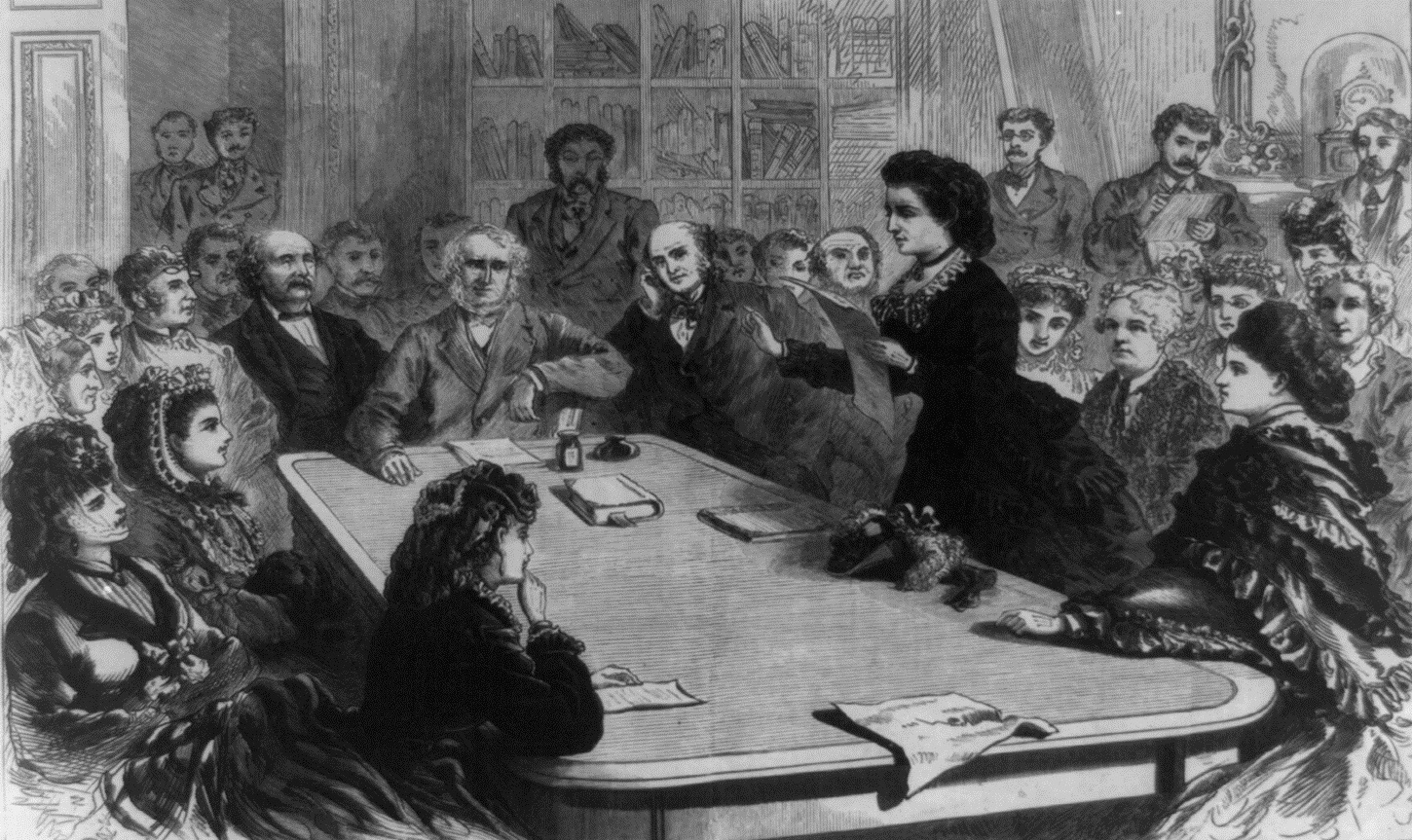This article was written by Hon. Richard A. Dollinger. Judge Dollinger is a member of the New York Court of Claims and an acting Supreme Court Justice in Monroe County. Judge Dollinger delves deeper into New York State judges and the role they played in the women’s suffrage movement in Issue 12 of Judicial Notice, the Historical Society’s journal which focuses on New York’s legal history. This issue is ready to be mailed to your doorstep and is only available to Society Members. Don’t miss out on this remarkable article and many more; become a member by Joining the Society.
Photo: Victoria Claflin Woodhull reading an argument in favor of women’s suffrage to the Judiciary Committee of the House of Representatives, 1871. Library of Congress, Prints & Photographs Division, LC-USZ62-2023
When upstate New York women gathered at Seneca Falls in July 1848, a national movement for women’s rights commenced. But, three months before, the all-male New York State Legislature passed the Married Women’s Property Rights Act, which forever changed the rights of women to own and manage their own property. A small group of men — past and future judges — spearheaded the passage of this law for more than a decade. During the Seneca Falls Convention, a figure no less than Elizabeth Cady Stanton praised the then recently-enacted statute as a first step on the road to women’s equality.
Judges, both past and future and several who sought to protect their daughter’s rights to inherit property, ushered in a new era of equal rights in New York State. The article “Judicial Intervention: The Judges who Paved the Road to Seneca Falls in 1848″ in Issue 12 of Judicial Notice tells the story of that dramatic change in New York’s perpetual search for equality for all and the role of lawyer-judges in fostering it.
***
One of the major themes of Judicial Notice Issue 12 is Women’s Rights and Women Pioneers in New York State. This theme is timely as the Society, and the State, celebrates 100 years of women’s suffrage in New York this year (1917-2017). While Judge Dollinger provides background on the women’s suffrage movement from the perspective of judges in the 1800s, three other Judicial Notice authors recount the lives of pioneering women in the State of New York. These authors, Michelle Henry, Hon. Erin Peradotto, and Michael B. Powers, focus on the first woman admitted to the New York State Bar, the first woman to run for President of the United States, and the first woman District Attorney in the State, respectively.
However, this isn’t the only theme explored in Issue 12. To read Judge Dollinger’s entire article as well as the many others, you must become a Member.

